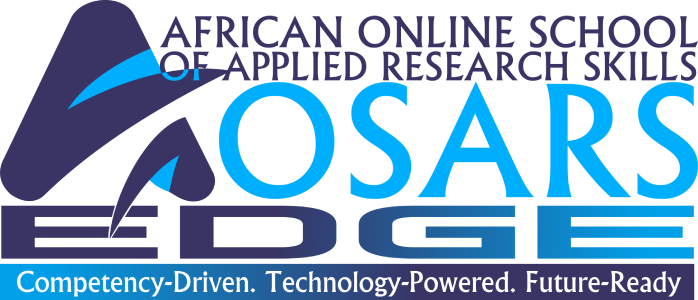AOSARS TRAINS PHD SCHOLARS ON CHAPTER 3 METHODOLOGY WRITING

AOSARS TRAINS PHD SCHOLARS ON CHAPTER 3 METHODOLOGY WRITING
On September 13, 2025, AOSARS hosted an in-depth session on Chapter 3: Research Methodology. The training covered the key components of this critical chapter, including research philosophy, design, population, sampling, instrumentation, data collection, analysis, and ethical considerations.
The session highlighted that Chapter 3 can be both the easiest and the hardest section of a thesis: straightforward for those familiar with research methodology and statistics, but challenging for those unsure of the many available options. To make the process manageable, systematic action plans were shared for each section—define, choose, describe, apply, and justify.
Key takeaways included:
Research Philosophy & Design: Participants learned how to define their research philosophy, explain its importance, state and justify their choice, and follow the same process for research design.
Target Population & Sampling: Guidance was provided on describing target populations, presenting them in tables, calculating sample size with formulas, and justifying chosen sampling techniques. Stratification tables were recommended where relevant.
Instrumentation & Data Collection: Emphasis was placed on defining data collection tools, describing their characteristics, and narrating authorization steps such as proposal defense approvals and ethical clearances.
Data Analysis & Ethics: Both quantitative and qualitative methods were addressed, from descriptive and inferential statistics to thematic analysis, with emphasis on linking each method to research objectives. Ethical considerations such as confidentiality and informed consent were also discussed.
A major highlight was the demonstration of AI in simulating Chapter 3. Participants saw how AI could generate structured drafts with APA 7 citations, providing a “skeleton” to visualize the chapter. However, it was stressed that AI outputs should serve as drafts for brainstorming, not as copy-paste solutions. Researchers must still validate content with contextual knowledge and credible citations.




